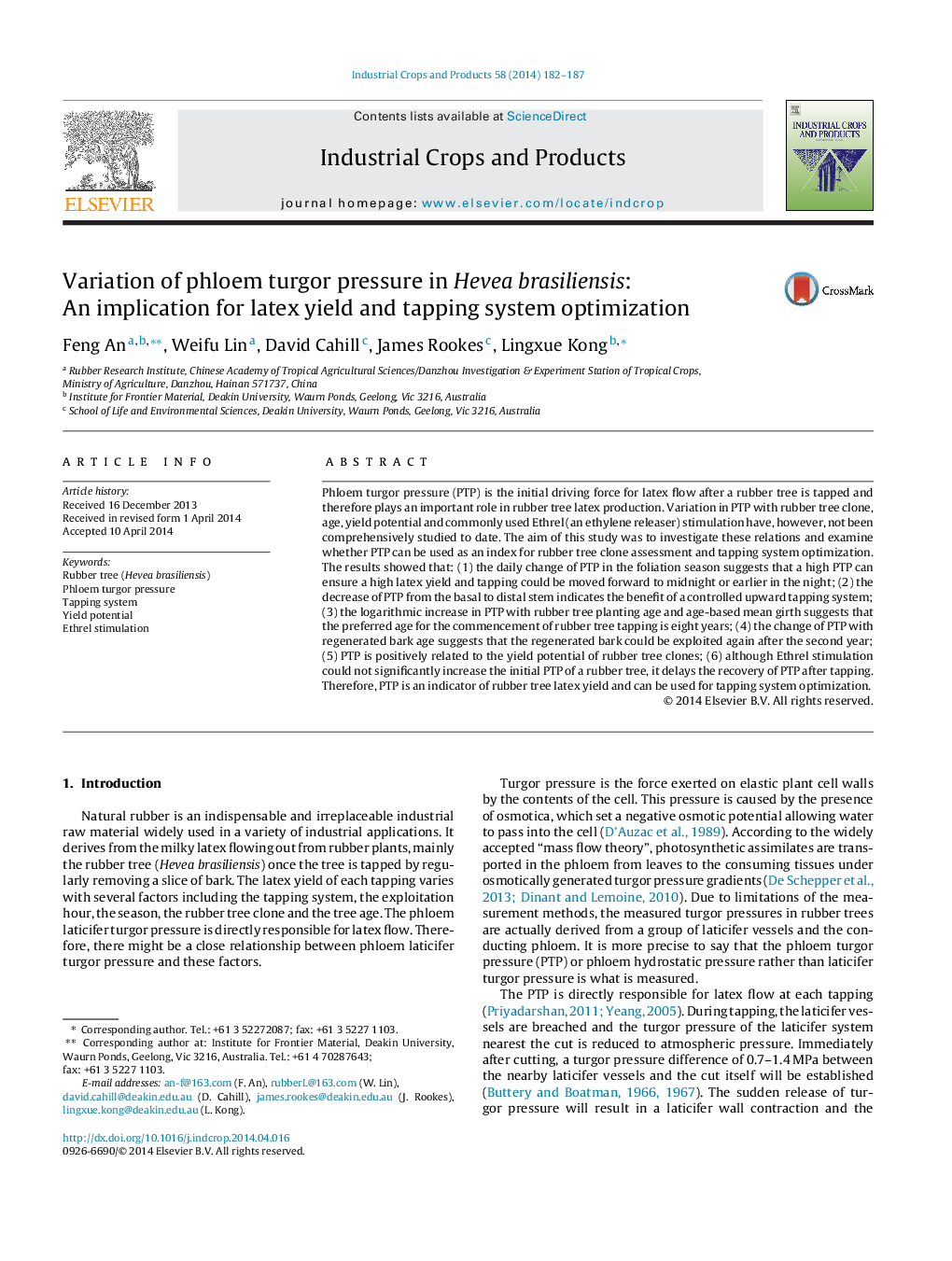| Article ID | Journal | Published Year | Pages | File Type |
|---|---|---|---|---|
| 6376699 | Industrial Crops and Products | 2014 | 6 Pages |
Abstract
Phloem turgor pressure (PTP) is the initial driving force for latex flow after a rubber tree is tapped and therefore plays an important role in rubber tree latex production. Variation in PTP with rubber tree clone, age, yield potential and commonly used Ethrel (an ethylene releaser) stimulation have, however, not been comprehensively studied to date. The aim of this study was to investigate these relations and examine whether PTP can be used as an index for rubber tree clone assessment and tapping system optimization. The results showed that: (1) the daily change of PTP in the foliation season suggests that a high PTP can ensure a high latex yield and tapping could be moved forward to midnight or earlier in the night; (2) the decrease of PTP from the basal to distal stem indicates the benefit of a controlled upward tapping system; (3) the logarithmic increase in PTP with rubber tree planting age and age-based mean girth suggests that the preferred age for the commencement of rubber tree tapping is eight years; (4) the change of PTP with regenerated bark age suggests that the regenerated bark could be exploited again after the second year; (5) PTP is positively related to the yield potential of rubber tree clones; (6) although Ethrel stimulation could not significantly increase the initial PTP of a rubber tree, it delays the recovery of PTP after tapping. Therefore, PTP is an indicator of rubber tree latex yield and can be used for tapping system optimization.
Keywords
Related Topics
Life Sciences
Agricultural and Biological Sciences
Agronomy and Crop Science
Authors
Feng An, Weifu Lin, David Cahill, James Rookes, Lingxue Kong,
